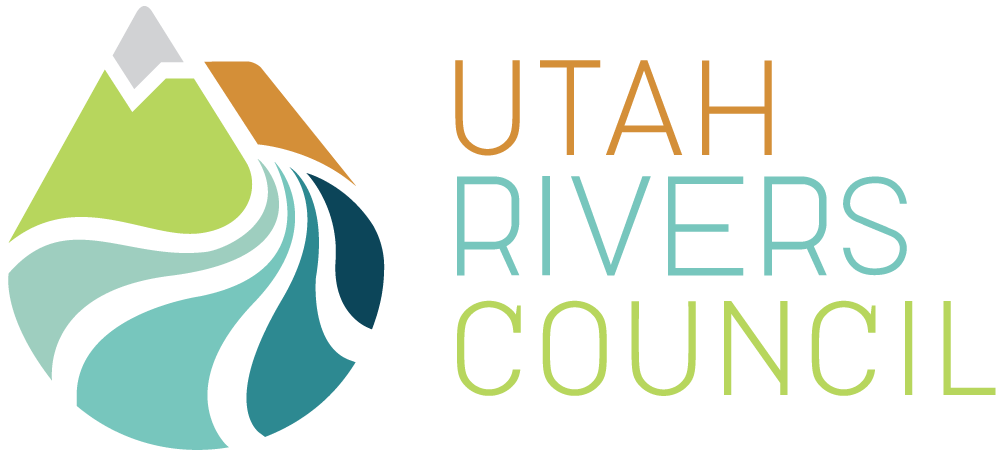RainHarvest
The Utah Rivers Council is excited to continue our RainHarvest program in 2022! We are partnering with more municipalities than ever before, offering deeply discounted rain barrels in communities across the Wasatch Front!
Harvest your rain. Utah Rivers Council offers residents the opportunity to affordably conserve water through rainwater collection. By purchasing heavily discounted rain collection barrels through URC’s annual RainHarvest program, Utahns can heavily reduce municipal water demand and help improve the water quality of local streams, rivers and lakes by decreasing polluted runoff.
How does RainHarvest work? URC partners with Rain Water Solutions to acquire rain barrels in bulk directly from the manufacturing plant. These rain barrels are then driven straight to Utah and dropped off for our annual RainHarvest event, when hundreds of rain barrels are picked up by residents all in one day! This eliminates any storage costs, allowing Utahns to buy a rain barrel for just $83, a significant discount from the rain barrel’s $139.99 retail value. Some municipalities also subsidize a number of rain barrels for the price of $55 just for their residents. Salt Lake County, Millcreek, Murray, Sandy, Park City, Summit County, Ogden and Eagle Mountain are among the municipalities that have partnered with the Utah Rivers Council over the program’s 7 years to distribute over 5,700 rain barrels to Utah residents. This means every time it rains enough to fill a 50-gallon barrel, over 285,000 gallons of water are saved through this simple practice. Over time, these savings will grow to millions of gallons of water.
How do rain barrels work? Rain barrels are placed under roof downspouts to collect the water that falls during rainstorms. The water that is collected can be used for a variety of outdoor purposes, including irrigating gardens and lawns. We work closely with Rain Water Solutions to provide high quality rain barrels to residents across the Wasatch Front. They have put together a comprehensive guide to setting up your rain barrel. Click Here to learn more about your rain barrel and start conserving water!
How does RainHarvest impact water quality? Much of the rain that falls becomes runoff, which is funneled into stormwater systems and nearby waterways. Retaining rainwater where it falls by barrel collection helps reduce the amount of stormwater runoff that scours our streets, driveways, and gutters and washes urban pollutants into local water bodies. This is a valuable water quality benefit because runoff is the number one source of pollution in our waterways nationwide.
Typical Rain Barrel Setup
How much water can RainHarvest save? Rainwater harvesting is cost-effective and can conserve large amounts of water. It is estimated that between 15,020 - 22,940 gallons of rainwater fall on a Salt Lake County house during the spring, summer and fall. A GIS model developed at Utah Valley University found that from April through October, Salt Lake City could collect 400 - 525 million gallons of water on residential buildings alone. Incorporating rainwater harvesting practices on commercial buildings would increase this potential water savings.
Find out how much water you can collect with rain barrels from your home’s roof HERE.
Isn’t rainwater harvesting illegal in Utah? As of 2010, all Utahns are allowed to legally collect up to 2,500 gallons of rainwater on their property in covered above ground containers or in underground cisterns. If a residence is collecting rain water in more than two containers under 100 gallons or in one container above 100 gallons, they must register with the State Engineer. The process is free and can be completed in just a few minutes online.
Top 7 ways to use water collected via RainHarvest:
Use captured rain to irrigate your lawn and garden. You can even use it to water your indoor plants.
Use water to supplement your drip irrigation system.
Wash your car, bike, mailboxes, and other exterior fixtures with collected water.
Utilize captured rainwater to wash out recyclable bottles and cans before putting them in your recycling bin.
Irrigate ornamental trees and plants.
Remove dust and dirt from your artificial grass lawn, patio, doorstep, or driveway by spraying it with collected water.
Use reclaimed water to rinse off your artificial grass after your dog goes to the bathroom.
Contact us and we’ll let you know about upcoming rain barrel sales and municipal partnerships.



